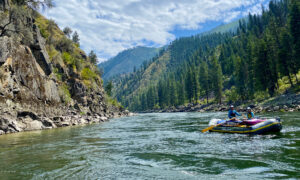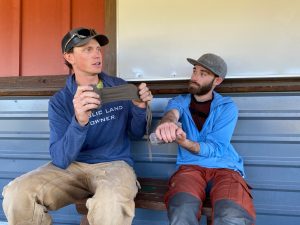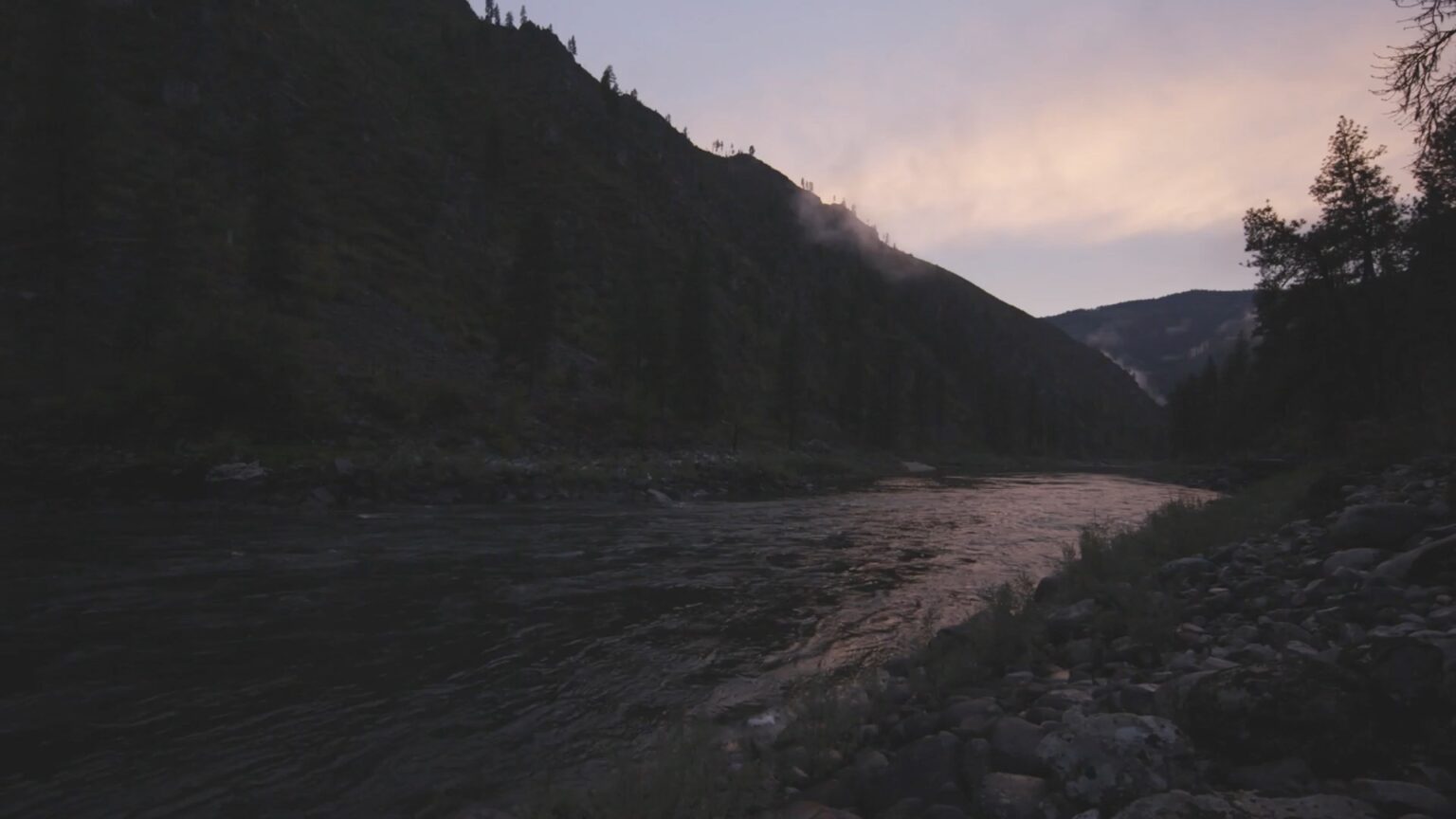Dutch Oven Tips! Cooking River-style with Confluences River Expeditions

Dutch ovens (D.O.’s) are a staple of many river kitchens.
The Confluences river kitchen is no exception. We usually employ 3-4 dutch ovens a night, each specifically tasked with creating a delicious part of our elaborate river meals. They allow us to turn any camp into a five star restaurant!
Dutch ovens have a long, storied history. They are beloved on the river because they allow a cook to create anything one would want to bake in a conventional oven. Pizzas, loaves of bread, tasty sweet desserts, anything is possible. You’re limited only by your imagination. If you’ve ever been inspired to learn the ways of a dutch oven then there’s no doubt you have also been intimidated. In this post we will show you some of our best practices for cooking with these versatile kitchen tools. If you follow a couple easy steps, we are sure dutch oven cooking will become your new favorite way to prepare a meal.
There’s a lot to cover in the world of dutch ovens. In this post we are going to focus on the basics of preparing, cooking and serving in a dutch. Stay tuned for recipe ideas in later posts!
Types: Aluminum vs. Cast Iron
This topic is hotly debated in the dutch oven community. There are pros and cons to both types, with the major considerations for us being weight and cleaning procedures. On the river we choose cast aluminum dutch ovens because they weigh less than cast iron. A medium sized 14” aluminum dutch weighs in at 8 pounds, where a similarly sized cast iron dutch weighs 25 pounds. We typically carry 5 D.O.’s with us on our river trips, choosing cast aluminum saves us around an 85 pounds. Also note the different cleaning practices recommended for differing styles of D.O.’s. Aluminum can be cleaned like a normal dish, with soapy water and a sponge, whereas cast iron should not be cleaned with soap as it strips the “seasoning” off the oven. You can read more here.
Preparing and Placement
At Confluences we are meticulous about cleanliness in our river kitchens. Dutch oven preparation is no exception. You always want to make sure the D.O. is cleaned out and fresh for whatever delicacy you choose to create next. Depending on what that is, you will want to oil the inside of the dutch to avoid any sticking during the cooking process. Parchment paper works great too! One side note: some recipes inherently contain a lot of oil, particularly desserts. Avoid adding excess oil as much as possible.
Dutch oven placement is a crucial aspect to the process. Especially when cooking outside where flat surfaces are hard to come by. Cooking on an uneven surface may result in an uneven final product! We like to use the metal lid of the fire pan as the base for our dutch ovens. But a metal pizza pan or D.O. lid works great too. The trick is creating a barrier between the bottom layer of coals and the ground, you want the heat to rise into the oven, not escape into the earth.
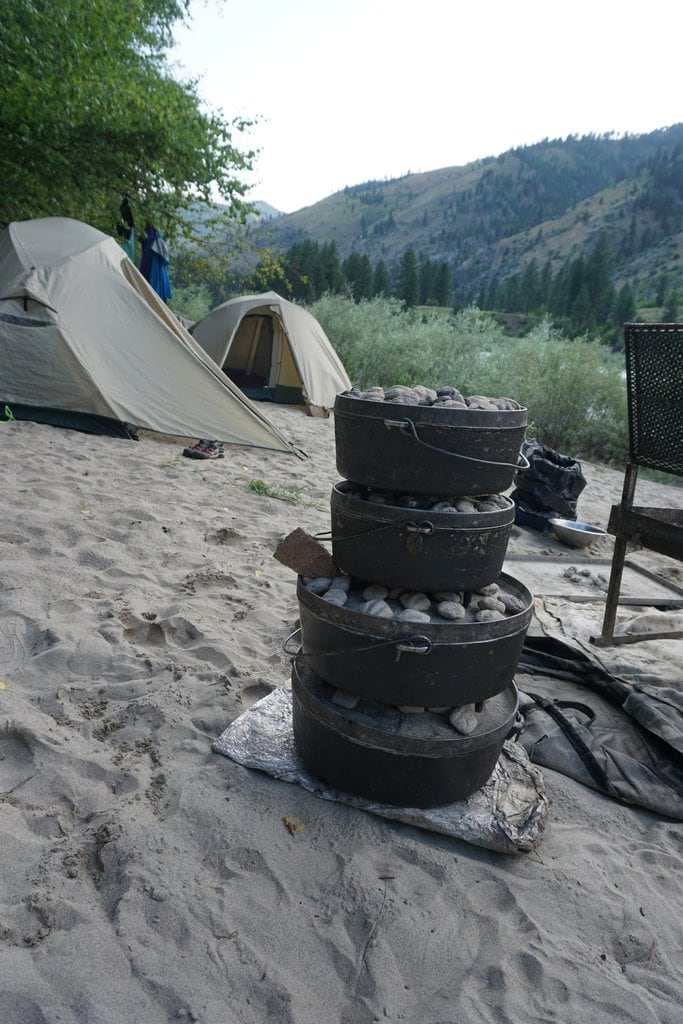
Fuel
Coals are the fuel of choice for dutch oven cooking. To activate the coals we put them over an open flame in the firepan, allowing them to light. Be sure that the coals don’t sit too long, they’ll turn to ash and not provide enough heat for your soon to be delicious D.O. creation. Our trick is transferring them with a small shovel or tongs to the dutch oven when the coals are roughly 2/3rds lit (not smoking anymore, color turning grey and red).
Quantity of Coals
There is some debate on this topic within the D.O. community. Even between river companies we’re sure there exist many “right” ways to number and place your coals. We will share our method that works well for our menu. Make sure to understand the heat requirements for what you’re trying to cook. You want to avoid drying out desserts, so typically less heat is fine. If you’re cooking meat or potatoes more heat may be required.
Confluences River Expeditions dutch oven method:
- We use the 1/3rd method, taking the number of coals we place on top and dividing by three for the bottom.
- We evenly disperse the coals. We create a ring of coals around the brim of the D.O. lid and place 2-4 coals in the middle of the lid. We also spread the coals evenly under the dutch oven.
- We make sure to use less heat on the bottom.
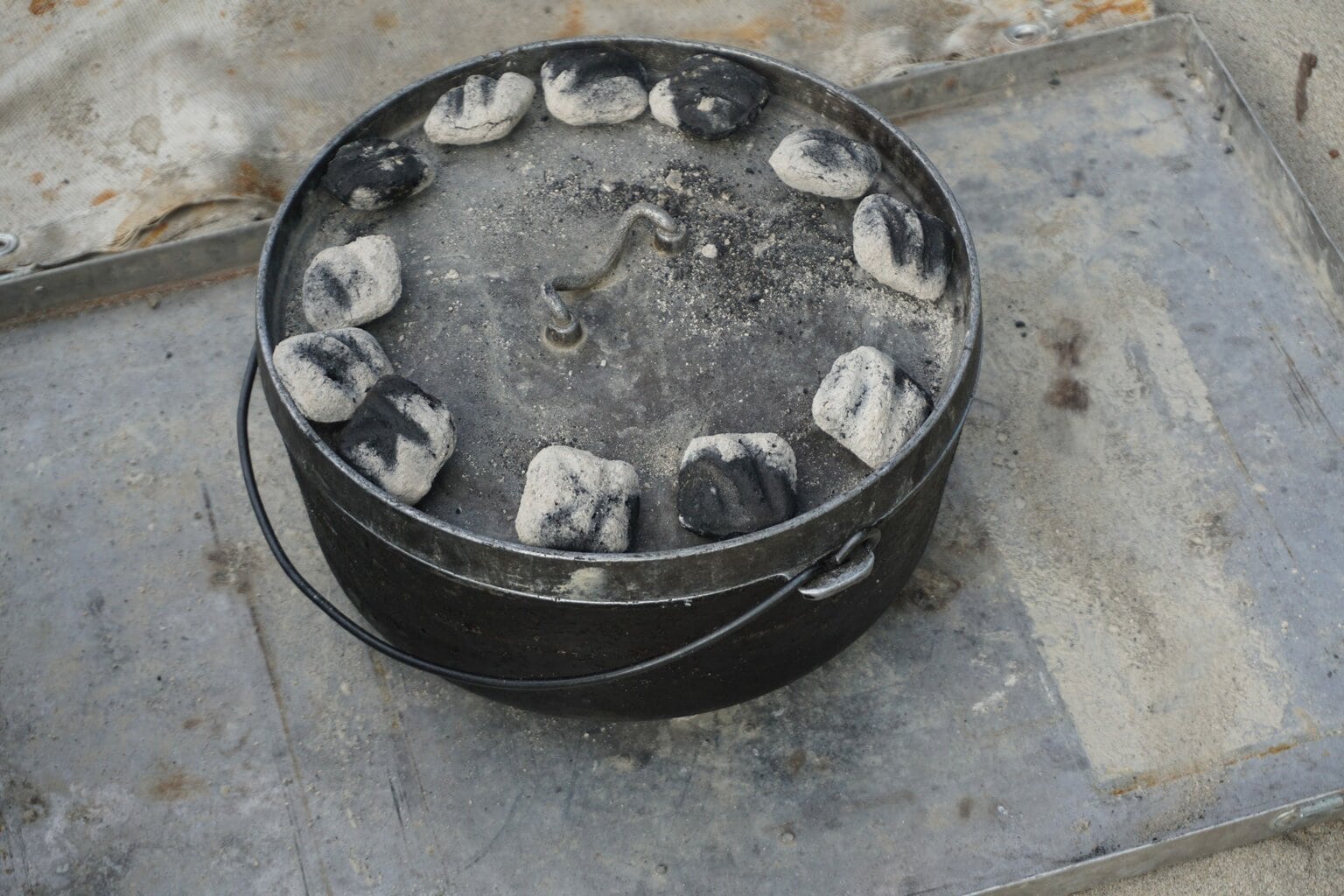
Checking the Dutch
Channel locks are a great tool for a dutch oven professional. The oven will be hot and the coals are dangerous. You’ll want to confidently grasp the D.O. while keeping a safe distance. Before you lift the lid be sure to know what you’re looking for. Is your meal golden brown, crisp, pulling back from the edges? Does it jiggle when you tap the side of the D.O.? You’ll lose valuable heat from the oven the longer you look so lift the lid prepared!

Serving!
If your meal is fully cooked use the channel locks to slide the coals off the top lid back into the fire. Carry the D.O. to a “landing zone.” Somewhere safe and stable where your meal can rest. You want to make sure all the flavors in your delicacy have time to meld together. Once your meal has had time to cool slightly, dig in and enjoy!
We hope these tips give you confidence to explore the exciting world of dutch oven cooking! Don’t hesitate to reach out if you have questions or want some recipe ideas!
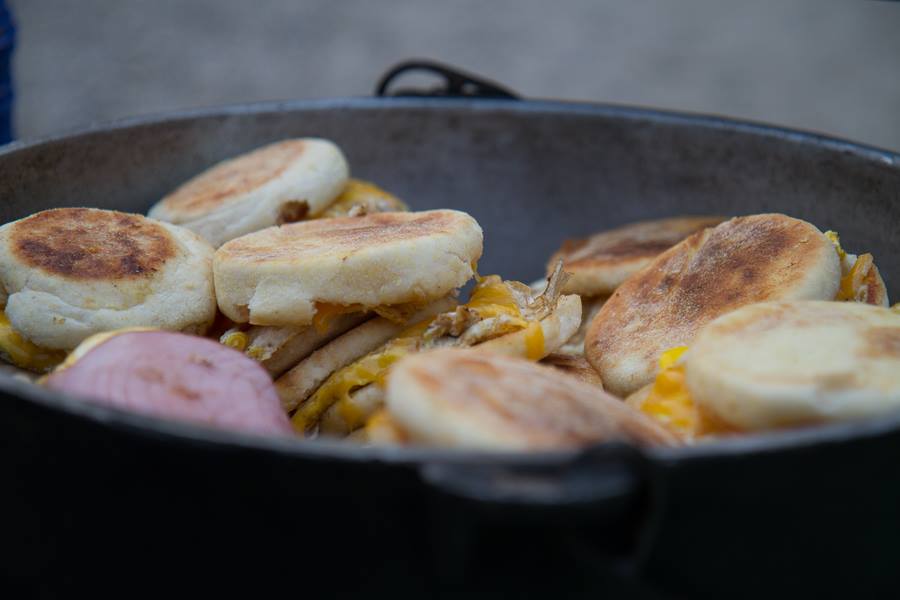
Confluences River Expeditions has offered world-class Idaho rafting trips on the gorgeous River of No Return since 1982. We give personal service from the first phone call to the last rapid. Book your unforgettable Main Salmon River adventure today!
Confluences River Expeditions does not discriminate on the basis of race, religion, gender identity, sexual orientation, age, or national and ethnic origin in its operations of trips, or in its employment practices. Confluences River Expeditions is an equal opportunity service provider and operates on special use permits from the Salmon-Challis National Forest. You can read more here.
